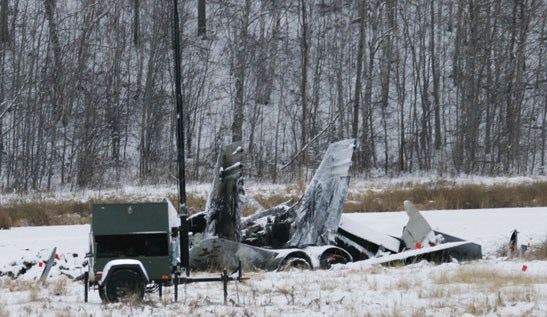An investigation into the CF-18 Hornet crash out of 4 Wing Cold Lake last November has found the aircraft was operating normally and focuses on human factors.
During a two-aircraft formation night vision goggles training mission, Capt. Darren Blakie of 409 Tactical Squadron ejected from his aircraft and landed in a forested area 13 kilometres northwest of 4 Wing within the City of Cold Lake. A rescue team located him two hours after the crash. He was not injured.
The Air Forces' Directorate of Flight Safety released its investigator's preliminary report last Wednesday. The investigation is ongoing.
The report states as Blakie selected the landing gear, the sudden rush of falling snow, illuminated by his landing light, disoriented him. It reflected through his head up display - the transparent screen that displays data in the pilot's line of sight - and washed out the instrument references used to control the aircraft.
Blakie thought the jet was going down and pulled it into a high-nose attitude, but was unable to confirm his attitude - the orientation of an aircraft's axes in relation to another plane - using his head up display or outside references. Believing he was quickly approaching the ground, he ejected, according to the report.
It also states the pilot was inexperienced at night flying and had not undergone a night vision goggles mission in 224 days. Direction has been given for night vision goggles training to now start "only after a pilot has increased flying experience."
The investigation that continues is now focusing on human factors including disorientation, organizational pressures and training practices, the report states.
The report also states a preliminary review determined at the time of the accident, CF-188 aircraft were routinely operating on night vision goggles in instrument meteorological conditions at an unlit airfield - neither of which are authorized under Division Flying orders.



